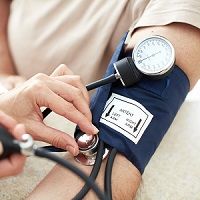Article
APROPRIATE Study: Propranolol Cuts BP in Patients With Resistant Hypertension
Author(s):
Patients in the propranolol arm recorded a significantly reduced mean office SBP of 130.00 (+/- 13.24) mmHg vs 139.93 (+/- 14.17) mmHg (p = 0.046).

In a late-breaking poster presented at the American Heart Association (AHA) 2019 Scientific Sessions in Philadelphia, investigators in Sri Lanka add a randomized controlled trial to the evidence base of mechanistic studies supporting the use of propranolol in hypertension.
The randomized, double-blinded, placebo-controlled clinical APROPRIATE trial evaluated propranolol’s efficacy in patients with resistant hypertension at the National Hospital of Sri Lanka. Patients with a high blood pressure who were on 3 or more antihypertensives and diagnosed by ambulatory blood pressure monitoring (ABPM) were included in the study. Exclusion criteria included whitecoat hypertension.
Over a course of 3 months, a total of 108 patients were screened, with 40 randomized 1:1 to receive either the 40 mg of the study drug 3 times per day or matching placebo.
The primary outcome was systolic and diastolic blood pressure (SBP/DBP) measured in office and on ABPM.
Baseline characteristics were well-balanced between study arms, with a baseline mean SBP of 159.72 mmHg vs 158.00 ± 10.82 mmHg in the propranolol and placebo groups, respectively. Mean baseline DBP was 90.28 mmHg vs 89.00 ± 15.49 mmHg in the propranolol and placebo groups, respectively.
Baseline values upon ABPM were comparative across the propranolol and placebo groups—total mean SBP (148.58 +/- 7.16 vs 153.58 +/- 12.73; p = 0.141), DBP (84.34 +/- 6.83 vs 81.82 +/- 18,74; P = 0.575), mean awake SBP (151.68 +/- 6.28 vs155.77 +/- 12.21; p = 0.192), mean awake DBP (86.54 +/- 6.96 vs 87.85 +/- 7.31; p = 0.565 ), mean sleep SBP values (135.19 +/- 35.22 vs 147.60 +/- 20.01; p = 0.179) and mean sleep DBP (75.72 +/- 19.77 vs 80.05 +/- 10.02; p = 0.387).
After 3 months of either treatment or placebo, patients in the propranolol arm recorded a significantly reduced mean office SBP of 130.00 (+/- 13.24) mmHg vs 139.93 (+/- 14.17) mmHg (p = 0.046). Mean office DBP was 77.83 (+/- 9.65) mmHg compared with 82.66 (+/- 8.58) mmHg in the propranolol and placebo groups, respectively (p = 0.142).
In the propranolol group vs placebo, mean ambulatory SBP was 137.28 +/- 12.55 vs 149.17 +/- 12.51; (p = 0.08) and the DBP 79.40 +/- 5.52 vs 84.08 +/- 8.44 (p = 0.05). Mean change from baseline in DBP was 5.422 +/- 6.14 mmHg in the propranolol group vs -3.48 +/- 15.59 in the placebo (p=0.031).
Investigators found that the treatment arm also displayed reductions in mean ambulatory SBP, awake SBP and DBP, and smaller variations between awake and sleep ABPM, although these results were not statistically significant. Symptomatic sinus bradycardia led to cessation of the drug for 1 patient.
In conclusion, the study supports the efficacy of propranolol in lowering blood pressure in patients with resistant hypertension compared with placebo.
The poster, “Addition of Propranolol in Resistant Arterial Hypertension Treatment (APROPRIATE Study) - A Randomized, Double Blinded, Placebo Controlled Clinical Trial,” was presented Saturday, November 16, 2019, at AHA 2019.





